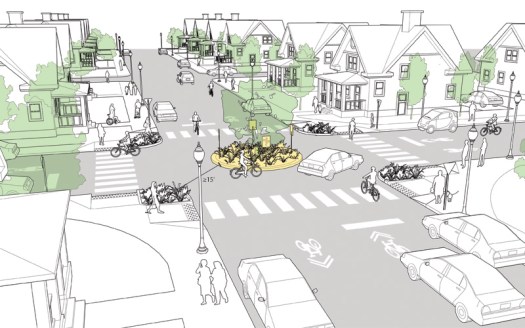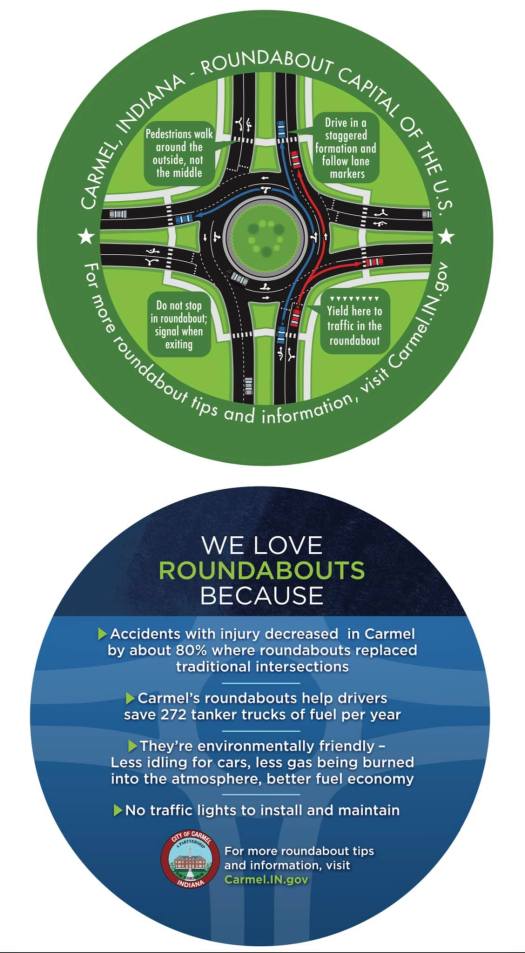Asbury Park is the recipient of funds to implement traffic calming methods on 3rd and 4th Avenues.
Some residents have been vocal about their objections to mini roundabouts, citing loss of parking. This is NOT true – the parking they fear losing is not legal within 25′ of the corner. Yellow daylighting paint now clearly indicates required parking distance away from the corners at the intersections.
APCSC is happy to discuss the best ways to help prevent speeding, which can include other treatments like raised crosswalks, and speed humps.
Stop signs and signals are not traffic calming methods
Don’t rely on enforcement to stop speeding
Take a look at the information below. As always, please feel free to reach out about proven ways to #slowthecars.
Onward~
Polli Schildge
APCSC Editor
Learn about roundabouts, including how to travel through them as a pedestrian, cyclist or driver.
PUBLIC OPINION
How Do You Feel About Roundabouts?
After driving roundabouts, the number of people who favor them more than doubles. A survey on drivers’ views of roundabouts before and after construction conducted by the Insurance Institute for Highway Safety (IIHS) illustrates public opinion. Before construction, the number of drivers in favor of roundabouts was only 31 percent, and those strongly opposed was 41 percent. After driving them, this shifted to 63 percent in favor and only 15 percent strongly opposed.
Studies have shown that roundabouts are safer than traditional stop sign or traffic signal controlled intersections.
Roundabouts reduced injury crashes by 75 percent at intersections where stop signs or traffic signals were previously used for traffic control, according to a study by the Insurance Institute for Highway Safety (IIHS). Studies by the IIHS and Federal Highway Administration (FHWA) have shown that roundabouts typically achieve:
- A 37 percent reduction in overall collisions
- A 75 percent reduction in injury collisions
- A 90 percent reduction in fatality collisions
- A 40 percent reduction in pedestrian collisions
National Association of City Transportation Officials Guide To Mini Roundabouts

Mini roundabouts and neighborhood traffic circles1 lower speeds at minor intersection crossings and are an ideal treatment for uncontrolled intersections.
Mini roundabouts may be installed using simple markings or raised islands, but are best applied in conjunction with plantings that beautify the street and the surrounding neighborhood. Careful attention should be paid to the available lane width and turning radius used with traffic circles.

A Study of the Traffic Safety at Roundabouts in Minnesota
Roundabouts have become an increasingly popular intersection type by traffic engineers, communities, and transportation officials. The purpose of this report is to examine the safety performance of roundabouts by comparing the before construction crash rates and the after construction crash rates and traffic volume data. Overall, roundabouts are performing well when looking at the crash reduction record. Roundabouts in Minnesota have had over an 80% reduction in fatal and serious injury crashes
Minnesota has ~200 roundabouts, and like any other skeptical traffic engineering team, they’ve been documenting the results.
Carmel, Indiana has 138 roundabouts, the most of any city in the US. Roundabouts move traffic more efficiently and reduce the number of fatalities and serious-injury accidents. They work because of their safety record, their compatibility with the environment, their aesthetics and their ability to make it easier for pedestrians and bicyclists to navigate.



